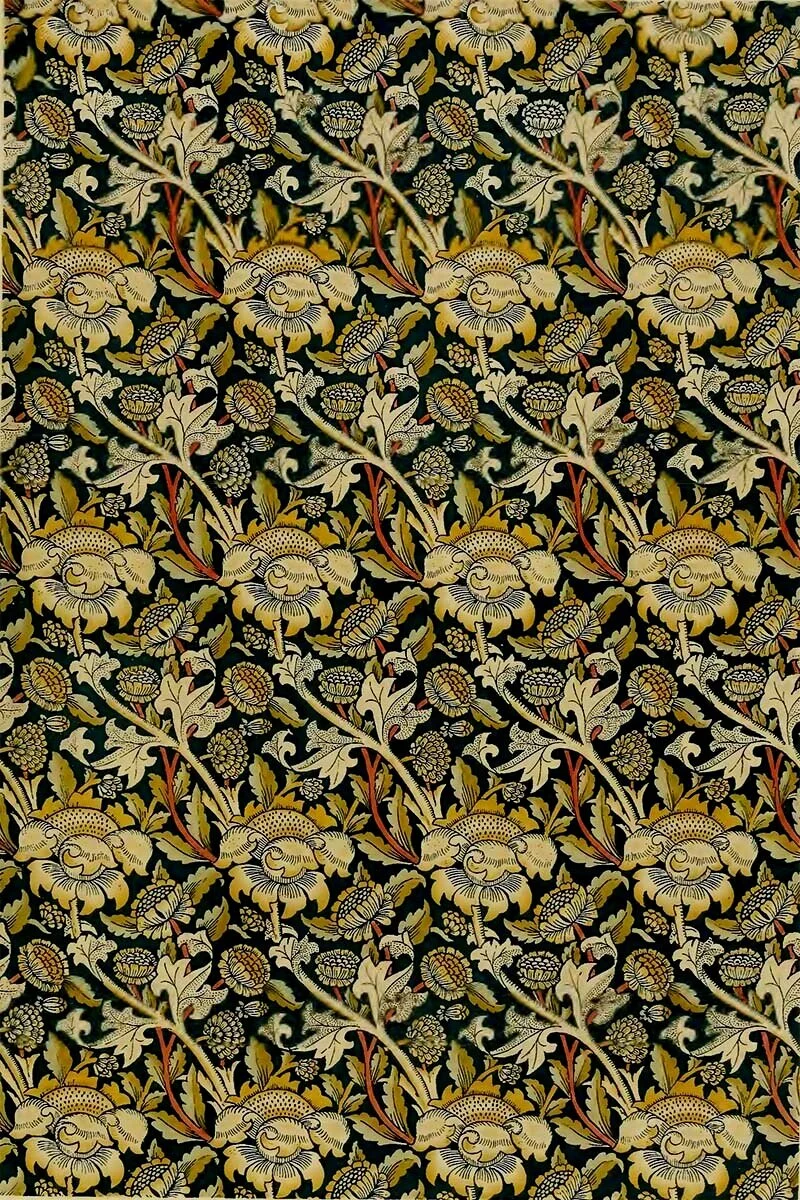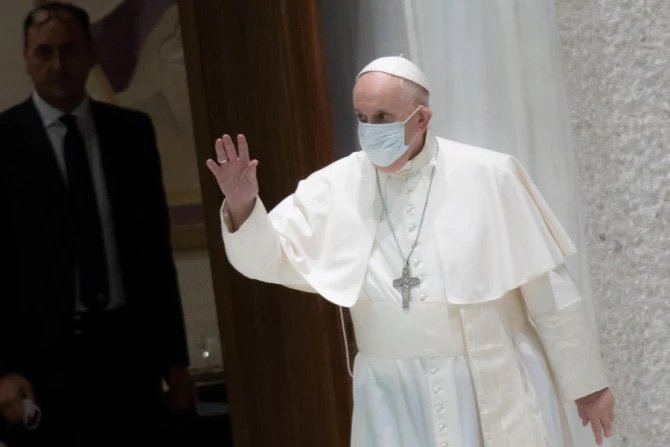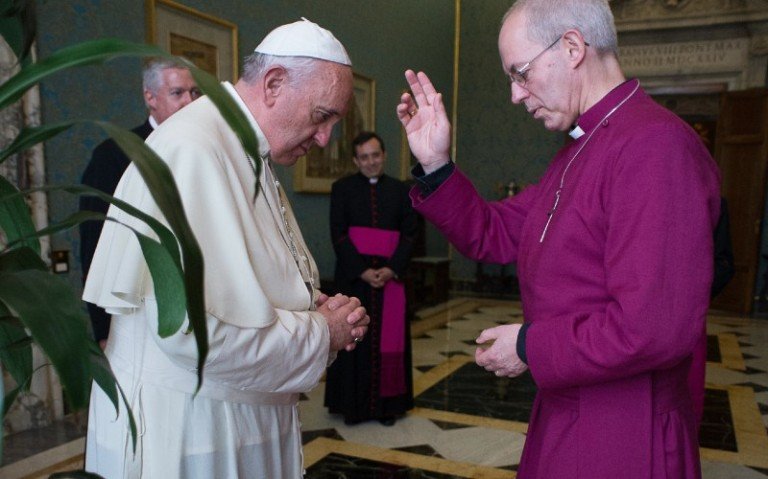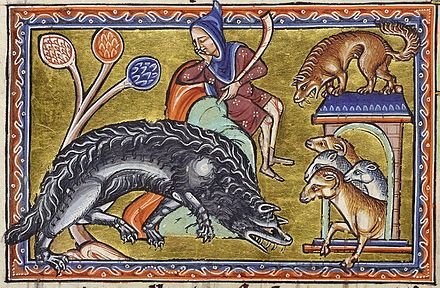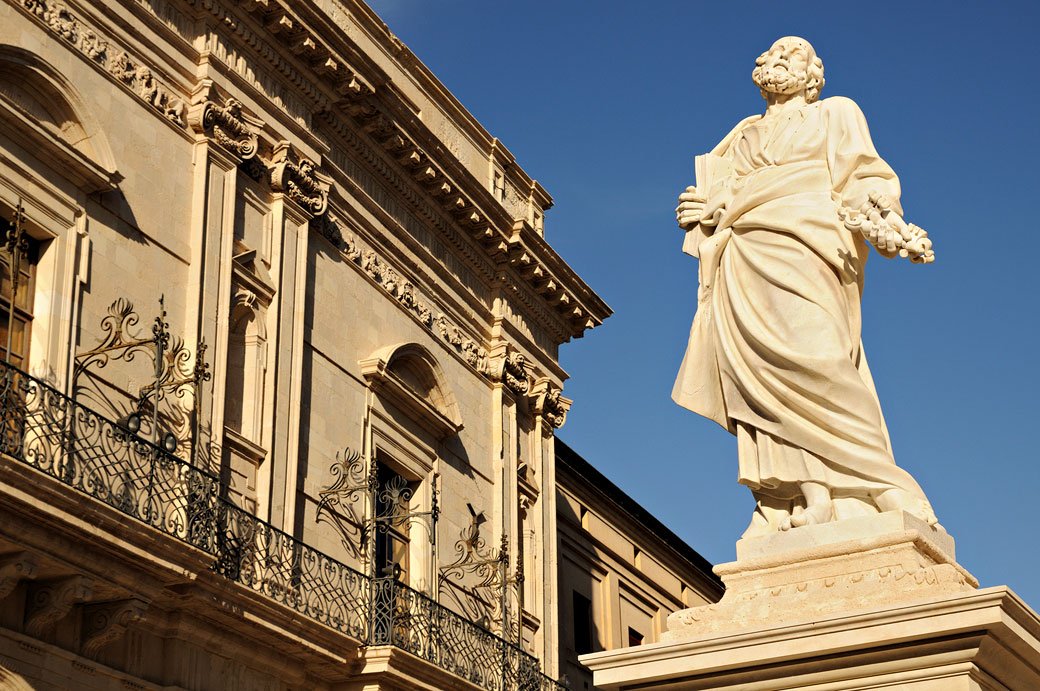
The Ringrose Affair - 3
Note : This article was first published on the Canada Fidèle website on 31st August 2018.
The Heart of the Problem
It would not be surprising in itself that a pastor of soul like Father Ringrose reminds his flock of the doctrine of the Church, even if there are always people who think that certain truths are not timely in these dark days in Church history. Father Ringrose, regardless of "what will people say?, simply reminds his followers of a few indisputable truths of our Faith, and draws conclusions from them that seem obvious to him.
But Father Ringrose, not without knowing it, is in fact awakening a latent conflict in the world of Tradition, which has taken on unsuspected proportions in the Resistance. So what is the heart of this problem? Is this a doctrinal problem that would divide the supporters of two different positions? Is it something else? We will try to shed some light on the present situation.
Three Schools of Thought
First, let us explain a few terms. In several crises of the Faith which have succeeded in the course of the history of the Church, different positions have given rise to different groups which have themselves received different qualifiers from their adversaries or have imposed themselves in order to distinguish themselves from other groups. In the present crisis of the papacy, different positions have gradually emerged to explain the mystery of iniquity at work in the Vatican, and names have been given to different schools of thought. Let us look at the main schools:
The Sedevacantists: This group (which seems to be expanding now every time the current occupant of the Chair of Peter opens his mouth) consists of those who believe that the Chair of Peter is vacant, that is that is to say empty, and that we do not in any way have a Vicar of Jesus Christ at this time at the head of the Church. Relying on the Magisterium of the Church and the promises of Christ to his Church and more particularly to Peter and his successors, the sedevacantists consider that the popes of Vatican II are neither invested with the authority of Christ, nor are they have been legitimately elected as visible heads of the Church of Christ, since a heretic, not being a member of the Church, cannot be its head. As the seat is vacant, an election could in theory take place in the Church to elect a successor to Peter, although in practice most consider that the present circumstances do not allow it. The Sedevacantists themselves divide into several schools which often have only minor differences. But the object of these lines not being to study precisely any of the schools, we will be satisfied with general views on each of the schools. Sedevacantists, in general, do not like the etiquette imposed on them to create a climate of fear around them. They are content to call themselves "Catholics who are faithful to the Faith and draw conclusions from the dogmas the Church teaches." Their nullam partem with the Church of Vatican II is absolute: it is not the Catholic Church, and, therefore, they believe that joining it is schismatic.
The symbol of the vacancy of the Apostolic See
The Sedeplenists: This group (which represents the largest part of the world of Tradition: FSSPX, FSSP and the other rallied institutes, many Resistance fighters) is made up of those who believe that the Chair of Peter is not vacant in any way, that is, it is occupied by the legitimate pastors of the Church. Of course, for most sedeplenists the current Church authorities are gravely erring in the Faith. This group therefore developed the position called "Recognise and Resist", that is: Recognise the Popes of Vatican II as legitimate pastors of the Church, but Resist their errors. Relying on the perpetuity of apostolic succession, they consider that it is not possible for the Church to be without a pope and that apostolic succession requires an uninterrupted series of successors of Peter until the end of time. The sedeplenists are divided into several schools as well, concerning mainly the question of what relations to have in practice with those whom they consider to be the current authorities of the Church. Here again, a long study would be needed to explore the differences in more depth, but that is not the subject of our discussion. The sedeplenists have only been given this name fairly recently, and rather in response to the label they give to the sedevacantists. Being in the majority, they consider that they do not deserve a label and call themselves "Catholics who neither want to fall into heresy (which they would do, they think, by accepting the doctrines and practices of Vatican II and the conciliar popes), nor in schism (which they would do, they think, by separating too absolutely from the conciliar popes)”. Their nullam partem with the Church of Vatican II is relative, and sometimes more rhetorical than real: the Conciliar Church is the Catholic Church in a certain aspect; it is not the Catholic Church in another aspect.
For the sedeplenists, the popes of Vatican II are truly the Vicars of Christ but they must be resisted in their errors against the faith.
The Sedeprivationists: This group is made up of those who have adopted a position that could be qualified as an intermediary, namely that the current occupants of the See of Peter were indeed legally elected as successors of Peter but, because of their manifest heresies, they are radically deprived of any authority in the Church of God. Wanting to safeguard the infallibility and indefectibility of the Catholic Church, but also the perpetuity of apostolic succession, they adopted a position which seemed to them to reconcile the two elements. According to them, therefore, there is someone who is elected to occupy the post of pope, and he materially continues the apostolic succession, so that no one can be elected in his place for the moment to occupy the post of bishop of Rome, but this character is deprived of the authority of God to lead the Church due to a failure in acceptance: the chosen one does not intend to seek the common good of the Church, and his acceptance is not valid. While the supporters of the "Recognise and Resist" position (the sedeplenists) believe in filtering what the conciliar popes say, accepting what is in conformity with the Faith and rejecting what is contrary to the Faith, the sedeprivationists believe useless to filter, but obstinately turn a deaf ear to what the conciliar popes preach, whether it is in accordance with the faith or not, as long as the latter have not returned to the whole Faith. They consider modern popes "to be unworthy of being obeyed, since they are heretics." Their nullam partem with the Conciliar Church is absolute, but they do not exclude the possibility that a conciliar pope will convert and be thereby invested with the authority of God, the obstacle to this investiture being lifted.
Experts will no doubt find fault with our summary explanation, but we believe we have popularised the main schools of thought of Tradition.
The Debate Centres Around Una Cum
Over the years, one of the elements that has divided these different schools in practical terms is the question whether the names of the conciliar popes and bishops should be retained or omitted in the Sacred Liturgy.
The intransigent sedevacantists are fiercely opposed to the name of the conciliar popes and bishops being kept in the Canon of the Mass. Several of them declared the "una cum" Masses, celebrated in communion with heretics, to be illegitimate and sacrilegious. Other more moderate sedevacantists, while preferring not to name the heretics in their own Mass, do not consider this question of the “una cum” as determining, because of the confusion which reigns today in the Church, but rather stop at the question of real and effective submission to the conciliar hierarchy. It has often been said that the Sedevacantists are fanatics who believe themselves to be the only Catholics on the face of the earth. The reality is much more mixed, and there are priests and faithful who re quite calm, but who intend to continue to use their faith and reason to analyse the "mystery of iniquity."
Una Cum omnibus orthodoxis atque catholicae et apostolicae fidei cultoribus? The theological problem surrounding una cum ...
The sedeplenists also have their intransigents who tend to be sectarian when the question of "una cum" is raised. They declare schismatic the Masses which are not celebrated "in union with" the conciliar popes, since, according to them, con-celebration with the modernist hierarchy is a guarantee of belonging to the Church. Other Sedeplenists are more moderate and understand that the reasons given by those in favour of withdrawing the name of the conciliar pontiffs are not light ones, but rather very serious ones.
It must be said, however, that much of the debate centres on the meaning of “una cum”. Some argue that the In primis prayer is just a prayer for the Pope and that con-celebration with the local bishop and the Supreme Pontiff is not at all intended for the Church when she uses these words. Others, on the contrary, relying on serious authors, understand this "una cum" as a con-celebration.
Be that as it may, even if the “una cum” should have a meaning of simple prayer for the Pope, some well-known authors do not believe it is possible to pray in the Canon of the Mass for heretics and misguided people, as Father Rioult recently recalled: “It is necessary to be in this faith to be included in the number of those mentioned in the Holy Church. The Holy Church, by emphasising these words “omnibus orthodoxis atque catholicæ et apostolicæ fidei cultoribus”, shows us clearly that she does not pray here for those who do not have the faith, who are not right-thinking or orthodox, and who do not derive their faith from the Apostles.” Dom Guéranger, Explanation of the Mass
As we can see, there is no lack of reasons for division, and few people remain calm in the unprecedented crisis that the Holy Church is going through.
The Resistance Agrees
How was the young Resistance going to position itself? In a document not yet published to date, Father Olivier Rioult recounts the creation of the Union Sacerdotale Marcel Lefebvre. He tells us that in 2014, on two occasions, the question of "una cum" was raised at the request of the Dominicans of Avrillé and of Father Joseph Pfeiffer. On this occasion, Father Rioult let it be known that he had no desire to associate himself with colleagues who would force him to go against his conscience and to unite in the celebration of Mass with the one he considered to be an agent of the destruction of the Church of Christ. Let us read it instead:
“When the USML was founded, after the appointment of the moderator, Bishop Williamson, in front of about twenty priests gathered, left everyone the freedom to be“ una cum ”or“ non una cum ”in the canon of the Mass ( 1). Father Thomas d'Aquin was a supporter of this freedom, Father Altamira likewise. Father Pierre-Marie, prior of Avrillé, did not object. Opposition came from Father Pfeiffer alone. But Father Picot masterfully made him understand that Father Pfeiffer, who took himself for “the true superior of the District of the USA”, was sorely lacking in wit, common sense and analogy… The incident was closed but no time was taken to refute Father Pfeiffer's objections in substance. We were in too much of a hurry by the closing Mass and the photo that was to follow… ”
USML founding meeting
Later, in 2015, Father Altamira wrote to the colleagues of the Resistance and in particular to the bishops:
“The vacancy of the see is something to be considered and, therefore, Francis, like his predecessors, might not be Pope. Much has been said about the meaning of "una cum". Still, one of the possible meanings ("in union with") establishes a union with Francis that it is not possible to admit in view of his heresies. Different confreres no longer wish to continue to mention Francis in the Canon of the Mass and that seems reasonable to us. As one of these priests recently said, we could apply here, as a solution to this situation, the opinion of Cardinal Cajetan cited by Father Gaudron in the Catholic Catechism of the Crisis in the Church ( catechism of the SSPX): "If someone, for a reasonable reason, holds the person of the Pope as a suspect and refuses his presence and even his jurisdiction, he does not commit the crime of schism, nor any other, provided that he be ready to accept the Pope if he was not a suspect. It goes without saying that we have the right to avoid what is harmful and to prevent dangers ... "(2)
“I am of the opinion” continued Father Altamira “that, given the current situation of the Church, and all the more so under the government of Francis, it is better not to“ add too much ”against sedevacantism and that in any case it is advisable to distinguish between a) a “visceral” sedevacantism, which intends to make a dogma of this thesis, and for which whoever does not accept it would no longer be Catholic and b) a “theological” sedevacantism which considers, on the basis of theological arguments, the factual possibility that one could be confronted with the vacancy of the see, but without considering heretics those who dissent of opinion.
I think this second position is reasonable and legitimate. We also have experience from years past. Let us not forget that Mgr. Lefebvre’s friend and comrade in struggle, Mgr. de Castro Mayer, was a sedevacantist, and they could work together without problem, and so it was until the end. I understand this was also the case with Abbot Coache, who worked with us in the SSPX until his death. In Argentina, Father Raúl Sánchez Abelenda, whom many of us knew, was a sedevacantist, and he worked with us without any problem until his death, even saying every Sunday one of the Masses of the Priory of Buenos Aires until the time of his death. If one excluded the sedevacantist hypothesis, one would be committing an intellectual error, because one cannot affirm that there does not exist the theological and factual possibility that this could happen one day, and it is enough to know what to this subject teach theologians (including several saints). "
A Question of Faith?
So this is where the real heart of the "Ringrose affair" lies. Father Ringrose's situation actually reveals hearts and points to the dishonesty of certain colleagues.
If the question of "una cum" is an insurmountable theological problem, then yes, the difference between "una cum" priests and "non una cum" priests makes any collaboration impossible. But then there can be no exceptions. All "non una cum" priests are to be excluded from the Resistance, and reasons of friendship and old friendliness cannot take precedence over questions of Faith and doctrine.
If, on the contrary, the question of "una cum" is not an insurmountable theological problem, then the same benevolence should be applied to all priests, provided they know how to show moderation.
However, that the "non una cum" priests of the Resistance were excluded and mistreated, that is something that will not be difficult to prove if necessary given the extensive documentation gathered on the subject. Constantly, these priests have asked that they simply be left free to follow their conscience and preach what they believe to be the truth, while respecting opposing opinion due to the confused situation in which the Church finds itself.
How can we explain that we have double standards with our colleagues based on our old friendships? Has the Catholic Church become a friendly affair? In fact, Bishop Williamson wrote to Father Pierre Roy on 17 August 2017:
"Father B. did not betray you by letting me know that you were wondering why I am working with Father Ringrose, who is indeed a sedevacantist, when I refuse to collaborate with you. Two weights, two measures ? I have known Father Ringrose and worked with him for over thirty loyal years, culminating in his incredible assistance in the consecration of Bishop Zendejas. He has been a rock, and his parish of St. Athanasius has been a safe haven for Catholics, to help them keep the faith, near the Washington D.C. Serpent's Nest for all these years. It is only in the last few years that it has almost fallen off its hinges because of Pope Francis. His sedevacantism is neither deeply rooted, ideological, nor disguised, and it is kept under control by the presence in his parish of Father Ortiz, who is explicitly sedeplenist. Alas, before you have a thirty year record behind you to equal Father Ringrose's, I will eat the dandelions by the root. All my blessings for your next thirty years.” Ego sum pastor bonus… I am the good shepherd…
The Resistance Breaks the Deal
Contrary to what had been decided at the founding meeting of the USML, soon afterwards difficulties began to be created for all those who were "non una cum" or who were deemed sedevacantist.
It was undoubtedly delicate for those who had given their word in 2014, to walk on their honour and openly reject their colleagues. In reality, everything indicates that the tactic employed was rather to put aside these colleagues, to refrain from answering their questions, to consider them as non-existent, to finally create all kinds of difficulties for them, so as to force them to separate themselves from the Resistance.
But the main tactic that was employed was certainly the adversarial reversal. Suddenly, it became impossible to collaborate with the “non una cum” priests. Thus, on 16 February 2017, Bishop Williamson wrote to Father Pierre Roy: “The USML, at its inception, with my personal encouragement, was deliberately left a very free association, so that each associate would be completely free to follow his own way. Those who mention the Pope's name in the Canon and those who do not now, as it turns out, need to go their separate ways. Joint action is difficult or impossible. The reason for the seriousness of the difference is that the pope is the main defender of the faith and the thinking of priests who think they can defend the faith without there being a pope is very different from the thinking of those who think they are defending the faith with a pope, however bad. "
Francis being the main defender of the Catholic Faith, it is not possible for the priests of the Resistance to work together without Francis. Let he who can understand, understand …
The leading advocate of the faith receives a blessing from the Anglican "Archbishop" of Canterbury, Mr. Justin Welby, in the Vatican under a Monseigneur’s touched eye
A Strange Mission
How long will it take for some clerics to believe they are on a mission to persecute Christ's faithful and other members of the clergy because they do not share their personal views in this apocalyptic crisis that the Church is going through? How long will they believe themselves to be the legitimate pastors of the Church, as if they could speak with the authority of Christ and impose penalties on those who refuse to follow them?
How much longer will it take to make what is simple complicated? Has faith become something only theologians skilled in the art of quartering their hair can properly understand? Or did Christ not come for the small and the humble?
Did he not warn us that “He knows his sheep, and his sheep know him?” How do they reproach the faithful for not recognising the voice of Christ in the Bergoglios, Ratzinger, Wojtyla and other wolves who invaded the fold of Christ? "The sheep," said Jesus, "will not follow a stranger, but will flee from him, because they do not know the voice of strangers." John 10:5
What is the use of the aforementioned clerics to want to impose their personal views on everyone? What good is it for them to have made the sacraments of Christ instruments of power? Do they do this in the hope of receiving praise from Christ? Are they grazing the sheep or "dominating with pride and safeguarding their authority" as the Virgin says in La Salette?
These are all questions that will need to be answered in the court of the just judge.
Can the sheep no longer make the difference between the voice of the wolf and the voice of the shepherd?
“Tell the Church”
Many have been able to read two recent articles on the La Sapinière website which revealed certain inglorious details about the actions of those who, while saying they do not want to lead the Resistance, nevertheless pull all the strings.
One might ask the question of the advisability of such publications. Some timorous minds seem to dread these untimely revelations above all else. The Lord, on the other hand, does not seem opposed to hearts being revealed when a peaceful discussion is left out:
If thy brother does thee wrong, go at once and tax him with it; and so, if he will listen to thee, thou hast won thy brother. If he will not listen to thee, take with thee one or two more, that the whole matter may be certified by the voice of two or three witnesses. If he will not listen to them, then speak of it to the church; and if he will not even listen to the church, then count him all one with the heathen and the publican. Matthew 18:15-17
We believe that it is very important that the details of what has happened in recent years be known, so that the confreres who would like to do their duty and openly oppose the rallying to the Conciliar Church make no illusion about the situation of the "Resistance": this situation is not necessarily the one depicted on the Reconquista web-site...
God Laughs at Men who Deplore the Effects of Which They Cherish the Causes…
It is with these words from Bossuet that we will conclude this number 3 of the Ringrose Affair. Bishop Williamson rightly insists on the need not to be attached to the years of the 1950’s; that is, not to behave like the Catholics of the 1950s, who were quite ready to swallow Vatican II.
Likewise, would it not be time to stop doing "Two-Thousandism" and look for what could have led the Society to the crisis that has been suffocating it since 2012? Were not the priests and faithful of 2011 for the most part quite ready to swallow the Doctrinal Declaration of 2012? Is it not time to reflect peacefully on this reality called the Conciliar Church? On the identity of the blasphemers who have led the faithful to the loss of their souls for several decades? It is for daring to ask these questions that some are considered dangerous.
With peace in the soul, these questions will continue to be asked by their authors who have not left a situation of lies in the Society to lend their intelligence, their language and their pen to a situation of lie if not identical, at least similar.
Christe eleison!
[1] Tommaso de Vio cardinal Cajétan O.P., Commentarium in II-II, 39.1. Quoted in: Father Matthias Gaudron FSSPX, Catholic Catechism of the Crisis in the Church, May 2008.
[2] The disciples of the SSPX may cry scandal in the face of such freedom. But that would only be hypocrisy. A revealing anecdote will show it. On May 15, 2015, to celebrate the fifty years of priesthood of Reverend Father Raffali, who is non una cum, Fathers Beauvais and Radier served as deacon and sub-deacon in the presence of Fathers Boivin, 2nd assistant of the district of France, and Laguérie (Jacques) in surplice in choir. All thus manifested their liturgical union with a non una cum priest, that is to say with a priest who does not name Francis in the Canon of Mass and for whom the occupant of the see of Peter is not Pope. In his homily, Father Radier, who is una cum, praised Reverend Father Raffali, who is non-una cum, for his fidelity in the fight for the faith ... (Note from Father Rioult)
